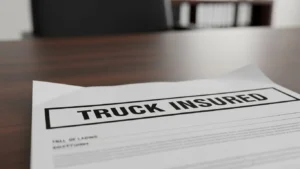The United States is leading a new energy revolution—one powered by waste, clean air, and cutting-edge science. From manure to solar power, from agricultural leftovers to captured air, these new fuels are already being produced, tested, and deployed.
As the world races toward an energy transition, the U.S. is spearheading the shift toward clean, renewable, and often unexpected sources. This transformation is driven not just by climate goals, but also by economic and geopolitical interests. These innovative fuels promise to cut emissions, boost green jobs, and reduce dependency on fossil imports. But what exactly are these fuels, how are they made, and why are they reshaping the global energy map?
1. Biogas and Biomethane: Energy Born from Waste
One of the most mature and widely used solutions in the U.S. is biogas, and its refined version, biomethane. These fuels are produced from organic waste: livestock manure, crop residues, wastewater, and municipal garbage.
How it’s produced: Anaerobic digesters break down organic matter, releasing methane.
Where it’s used: Heavy-duty transportation (trucks and buses), rural electricity generation, and heating.
Example: Hundreds of farms in California and Wisconsin already inject biomethane into the gas grid or use it to fuel vehicles. Companies like Clean Energy Fuels supply entire trucking fleets with renewable gas.

2. Green Hydrogen: The World’s Cleanest Fuel
Hydrogen is the most abundant element in the universe—but green hydrogen, made from water and renewable electricity, is the real game-changer.
How it’s produced: Through water electrolysis powered by solar or wind energy.
Why it matters: It emits zero carbon when burned or produced—only water vapor.
Future uses: Long-haul trucking, trains, ships, heavy industries (steel, cement), and energy storage.
Example: States like Texas, Utah, and California are building large-scale green hydrogen plants. The U.S. Department of Energy’s Hydrogen Energy Earthshot aims to slash hydrogen costs to $1/kg within a decade.

Advanced Bioethanol and Biodiesel: Fuel That Doesn’t Compete with Food
The U.S. has long used corn-based ethanol in its fuel mix. But the future lies in second-generation biofuels—those made without food crops.
Feedstocks: Forest residues, husks, special grasses (like switchgrass), and recycled oils.
Advantages: They reduce emissions without compromising food security.
Example: Companies like POET and Neste produce certified second-gen biofuels for aviation and ground transport.
E-Fuels: Clean Energy from Air and Electricity
E-fuels, or synthetic fuels, are a promising solution for hard-to-electrify sectors like aviation and maritime shipping. They are made by combining captured CO₂ with green hydrogen.
How it works: Captured CO₂ + green hydrogen → liquid synthetic hydrocarbons.
Advantages: Carbon-neutral when made with 100% renewable energy.
Example: Companies like Carbon Engineering (backed by Bill Gates) and HIF Global are building pilot plants in Texas and beyond to scale up e-fuel production.
Green Electricity: The Backbone of 21st-Century Energy
The immediate future is electric—but it goes far beyond plugs and chargers. Clean electricity from solar, wind, and hydro is transforming transportation, industry, and energy storage.
Applications: Electric vehicles, home batteries, smart microgrids, rural electrification.
Synergy: Green electricity also powers the production of hydrogen and e-fuels.
Example: Tesla, Rivian, and GM are leading EV manufacturing, while states like California, New York, and Massachusetts are pushing toward 100% renewable electricity targets.
oward a New Energy Paradigm
The United States is emerging as a living laboratory for future fuels. From the cornfields of Iowa to the solar arrays in Nevada, the next era of energy will be cleaner, more diverse, and decentralized. But the transition isn’t just about technology—it’s also a political and social challenge: to ensure that this transformation is inclusive and equitable, leaving no one behind.

Truck drivers are at high risk of developing diabetes
About 11% of the adult population meets the criteria for prediabetes, and there is a particular group at high risk: truck drivers. Diabetes rates in

Starting in trucking: required permits, registrations, and compliance
Are you a new carrier? This is what you need to know about permits, registration, and compliance. The trucking industry can be quite challenging for

Alberta Clipper Brings an Early Polar Blast: A Critical Alert for Drivers
The Alberta Clipper is sweeping across the country with fast-moving Arctic air, sharp temperature drops, and dangerous road conditions that demand heightened attention from all professional drivers.

American manufacturers trigger truck “dumping” investigation
Foreign trailer manufacturers under investigation for alleged “dumping” in the U.S. The U.S. truck market is at the center of a trade dispute. After domestic

ATRI Warns: Litigation Is Rising Across the U.S. Trucking Industry
A new report from the American Transportation Research Institute (ATRI) reveals how escalating litigation, higher legal costs, and mounting insurance pressures are reshaping the U.S. trucking industry. The findings mark a critical moment for motor carriers, insurers, and logistics stakeholders who must understand the changing legal environment — and the increasingly strategic role of strong insurance partnerships.

FMCSA says no to hours-of-service exemptions
FMCSA rejects two requests for exemptions to hours-of-service rules for commercial drivers. The Federal Motor Carrier Safety Administration (FMCSA) has denied two exemption requests related
